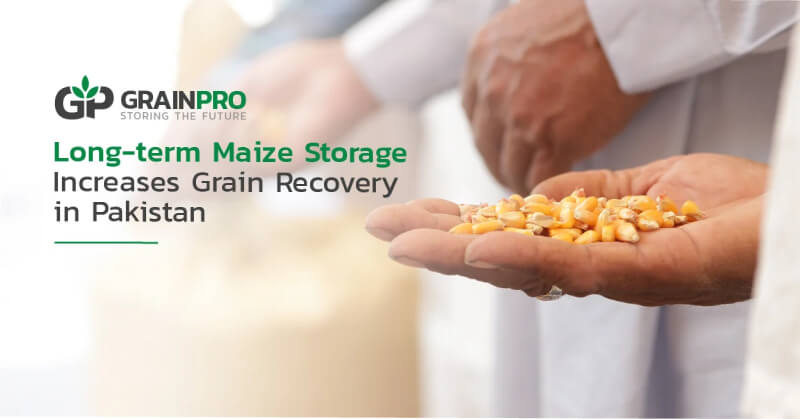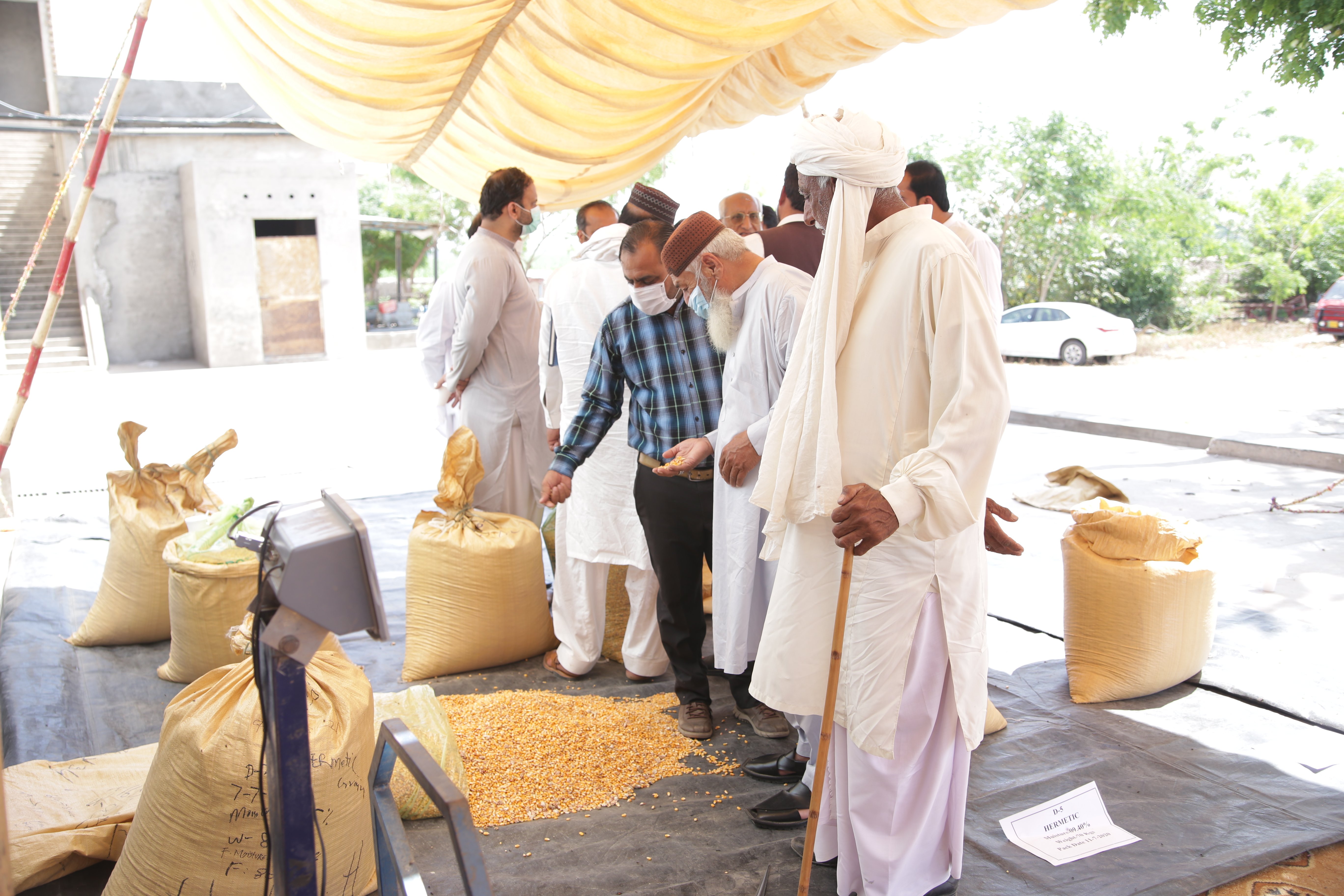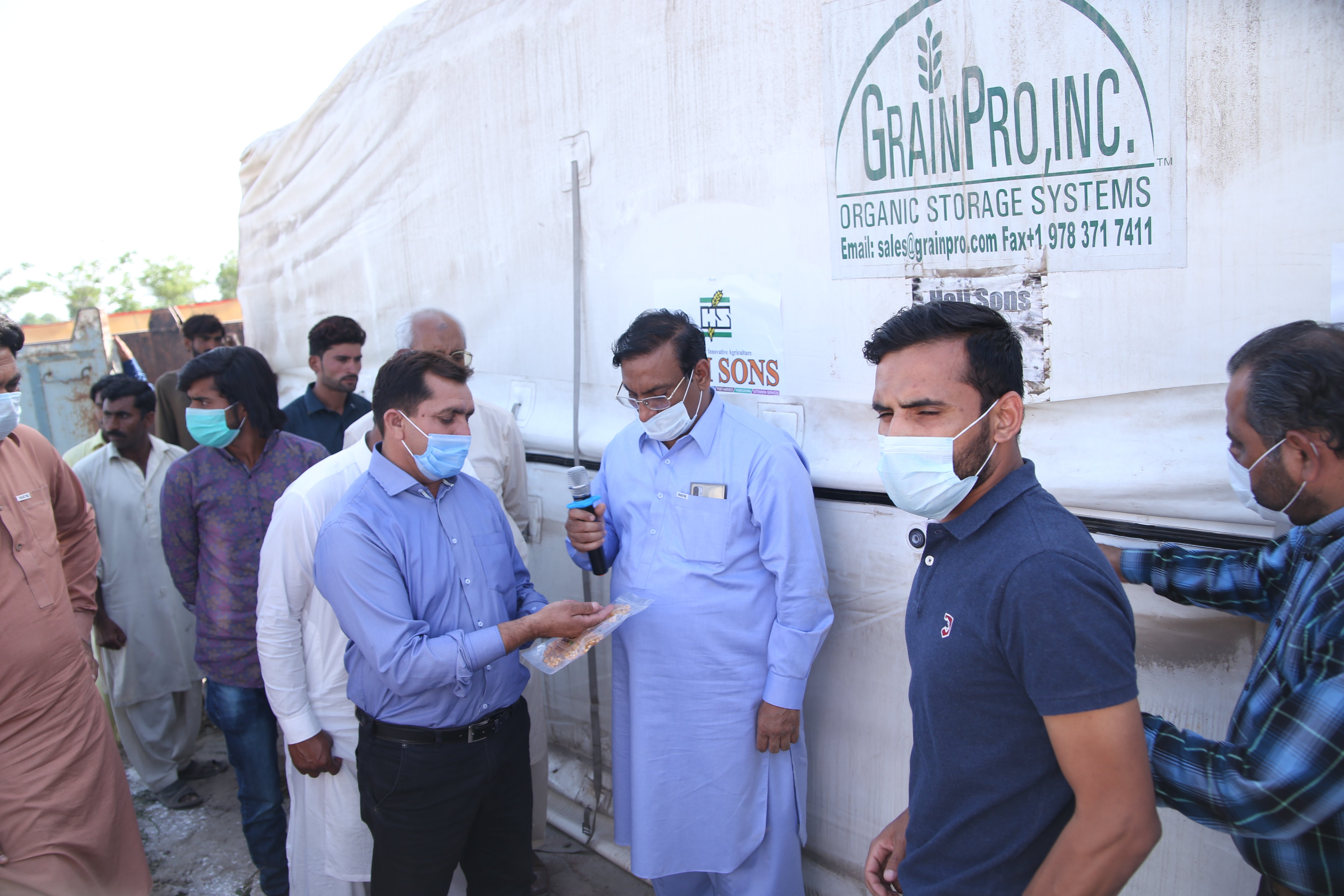Long-term Maize Storage Increases Grain Recovery in Pakistan

Factors that Contributes to High Maize Prices in Pakistan
In Pakistan, the agricultural land totals to 36.8 Million hectares and more than half or 20.1 million hectares are utilized for staple crops such as wheat, rice, and maize. Maize is an important crop because of its application in food and feeds. While its use for human consumption is declining, its utilization in the feed and wet milling industry is growing at a much faster pace than expected (Tariq and Iqbal, 2010). Maize application is mostly in the poultry industry (65%), wet milling (15%), dairy feed concentrate (10%), and for human consumption as bread and flour (USDA Grain Report, 2019).
With the rapid expansion of the poultry, dairy, and feedlot sector, it is difficult for the domestic maize supply to cater to the demand (Habib et al., 2013). The agriculture industry in Pakistan is still heavily non-mechanized owing to the small-scale farmers. Approximately 77% of the farms are under 7.5 acres and 92% under 15 acres (Agri Census 2019-2020). Because of the small scale of farms, mechanization is not feasible and limited to the use of tractors. Farmers also deal with high levels of post-harvest losses, which amount to $1.3Billion because of the lack of adequate storage solutions (ADB). To avoid incurring storage losses, small holder farmers sell their produce immediately through middlemen who consolidates in volume at the community level then sell to the wholesalers. Hence, middlemen who are also informal lenders reap the profits of farming.
Pakistan also faces issues with low yields, climate change, depleting natural resources such as land and water. It ranks third among the countries facing acute water shortage because of rapid urbanization, water-intensive farming practices, and industrialization (International Monetary Fund, 2018). While the country has grown tremendously in terms of maize production for the last ten years, Pakistan still faces issues in insufficiency. Diversification in land use to non-agricultural application, soil quality, and salinity are contributing factors. Extreme droughts and floods can bring production down by 32-48% causing a ripple effect on prices. Imported corn, with an imposed 30% regulatory duty, closes the gap on the domestic demand.
Despite the gigantic leaps in the advancement in the feed industry, the challenge of high input costs remains because feed formulation is corn-based. High prices of maize increase the input costs and force feed manufacturers to offer finished feeds, also at high prices. In effect, livestock farmers pass on the high production costs to consumers because feeds comprise about 70% of the livestock production.

Plausible Investments that can Bridge the Gap
Maize is a Rabi (winter) crop, cultivated twice a year in Punjab and once a year in Khyber Pakhtunkhwa (KPK). Spring (winter) season begins in September and lasts until the start of December in both Punjab and KPK. These two provinces account for 99 percent of production. During lean months, the prices of maize go up to about 30% higher compared to the lean months (Pakistan Bureau of Statistics, 20-21).
While it is best to buy maize in bulk during peak seasons to take advantage of low prices, concerns on shelf life, infestation, decline in quality, and storage losses limits feed manufacturers to do so. Even if properly dried, exposure to moist conditions during storage will cause the kernel to absorb water from the surroundings leading to increase maize moisture contents, which result in enhanced deterioration (Devereau et al., 2002). Mold development, mycotoxins, insects, and pests contribute to storage losses.
To gather data, Haji Sons Pvt Ltd subjected 106 tonnes of maize to a side-by-side trial of maize stored in regular bags and another replicate using hermetic container called the GrainPro Cocoon to a six-month storage from July 2020 to Jan 2021. The results are as follows:

Haji Sons has pioneered in working with small-scale farmers across all stages of agriculture. Starting with high-quality vegetable seeds, off season vegetable production technologies, irrigation solutions, and now, post-harvest loss management, they have banked close to 10 million smallholder farmers who are trained by Haji Sons or have used Haji Son’s services.
Commercial Impact of Storing Maize for Long-term
The concept of storing in a hermetic container like the GrainPro Cocoon subjects the grains to a closed environment where both moisture and oxygen cannot get in. Unlike in regular storage where fluctuations in temperature and humidity affect the grain leading to deterioration and excessive loss in weight, hermetic containers preserve the original quality of the grain stored and keep them under an equilibrium moisture state.
In the case of the Haji Sons trial in Farm Chiniot, an initial reading during the sixth month of storage resulted in an 87% grain recovery compared to the 62% when using regular PP bags, an advantage of 25% or 1.3 tonnes of grains more grains recovered.

- 1. Achieving a flatline ingredient cost
With a 30% increase in prices of maize during the lean months, feed manufacturers can benefit from buying in bulk for their annual requirement when prices are low and store using Hermetic Cocoons to be used when maize prices are already high. This acquisition strategy can deliver a flatline ingredient cost throughout the year. Despite the minimal weight loss, the 87% grain recovery will still result in remarkable savings as prices of maize go up.
- 2.Preserve the quality and nutritional value of grains stored for a consistent formulation cost
GrainPro Cocoons are made with UV-protected and weather-resistant material allowing for the grains to maintain their quality even when stored for a long term. Oxygen and moisture, which is the culprit to rancidity and quality deterioration, cannot interact with the stored grains preventing the negative effects. Using Hermetic Cocoons can maintain the freshness of grains, preserve their quality and nutrition level. This eliminates the need to reformulate and therefore, manufacturers can enjoy a consistent cost of formulation.
- 3. Emergency supply even during calamities
Whether brought about by drought or flooding, the adverse effects of calamities contribute to the phenomenal decrease in maize supply. In Pakistan wherein both are prevalent, ensuring a consistent supply of maize for feeds gives the manufacturer a competitive edge as protection against shortage or sudden price increases.
- 4. Savings on fumigation
Infestation occurs because of two reasons - one, because pests present in the environment have access to the stored grains, and two because eggs that are trapped inside the stored grains prior to sealing the containers eventually mature. Hermetic Cocoons can address both causes, even without fumigation. Made from durable flexible PVC materials, Cocoons are resistant to pests, thus preventing infestation. It also naturally controls the “resident insects” which consume the oxygen inside the container, resulting in a low oxygen environment. To immediately achieve the low oxygen environment, carbon dioxide purging can be performed. At below 3% oxygen level, all forms of infestation die of suffocation inside the Cocoon.
- 5. Inhibits Mold Growth for Safer Feeds and Increased Productivity
GrainPro Cocoons keep the equilibrium moisture content of grains and therefore inhibits mold development and mycotoxins. Keeping the level of mycotoxins within an acceptable range is critical, especially for poultry. Contamination of animal feed with mycotoxins may induce sanitary disturbances and mortality among animals and secondary contamination of human consumers via eggs, meat, or milk (Greco et al., 2013).
- 6. Ease of use for indoor or outdoor space
GrainPro Cocoons are easily installable in less than a day and therefore, can serve as an extension warehouse as needed. It is collapsible and transportable on multiple locations and does not require any fixed structures.
More Hopes for Small Holder Farmers Through Haji Sons and GrainPro
After the success of this 106 Ton Trial in Chiniot, Haji Sons and GrainPro has come together to commercialize this technology through a concept note. Under this program, Haji Sons will provide hermetic storage solutions rental in multiple location in the district of Punjab. Farmers who store with them under hermetic solutions will also have access to financing for up to 70% of the commodity value.
Through this Haji Sons and GrainPro will directly reduce post-harvest losses for up to 30% and uplift small farmers by giving them additional profit in terms of price appreciation of commodity during lean months and access to finance to cater their immediate needs.
Haji Sons mission is to work on the cooperative model and to aggregate these small farmers, provide them with quality Agri-inputs, training & technology transfers, help them decrease post-harvest losses and link them directly to processors of commodities. This will help to increase the profitability of small farmers and ultimately uplift them.
GrainPro Cocoon is being used by organizations such as the World Food Programme (WFP), International Rice Research Institute (IRRI), International Maize and Wheat Improvement Center (CIMMYT), Food and Agriculture Organization (FAO) and Ministry of Agriculture of some countries. Several private and multinational companies also use Cocoon for storing maize and corn seeds. It has proven the technology to store maize and other commodities for long term. For inquiries, please reach to our official distributor in Pakistan, Haji Sons.
Haji Sons Pvt Ltd
Hajisons Group, 65 Street 13, Extension Cavalry Ground, Lahore,
Punjab, Pakistan, Email: imports@hajisons.pk/
Contact: Mr. Tahir Saleemi
tahir.saleemi@hajisons.pk
Contact: Mr. Farhan Tahir
farhan.tahir@hajisonsholding.com
